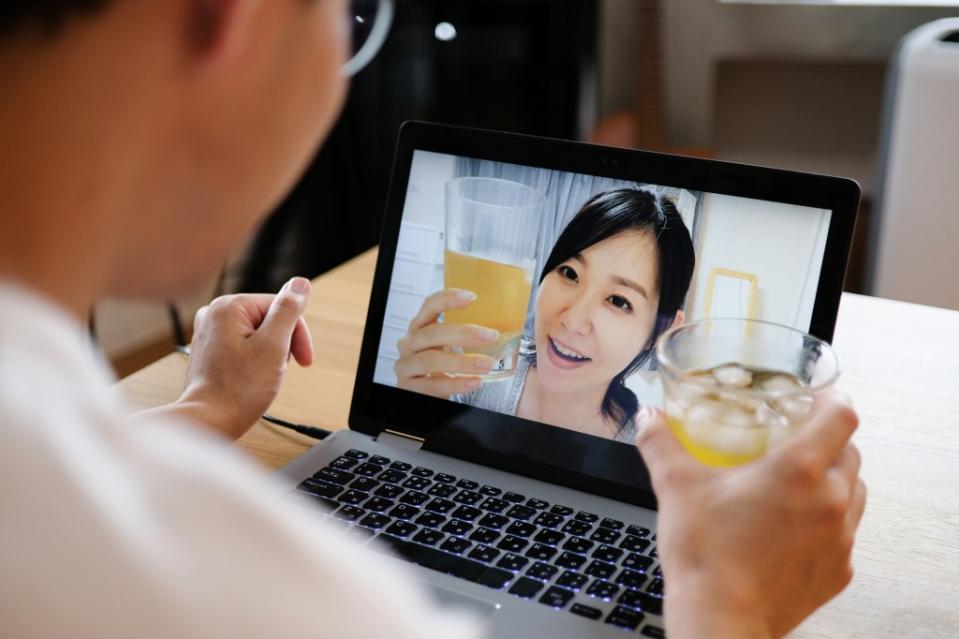Gen Z prefers first dates are digital instead of meeting people IRL: ‘It’s efficient’

It’s like love in the time of corona.
As inflation makes going out increasingly expensive, Generation Z is saving bucks by reverting to a pandemic-era romance trend: dating people virtually.
Dating app Wingman surveyed 500 people aged 18 to 27 on their dating preferences, Business Insider reported. They found that a staggering 65% preferred to meet digitally — the most significant change since the height of the coronavirus pandemic, according to Wingman founder Tina Wilson.
“Users in that younger age group just absolutely don’t bat an eye at it, and they’re like, it’s efficient, it’s great,” the dating app boss said while describing the so-called virtues of dating virtually. “You can have a quick chat and you can see if there’s that spark.”
However, the main reason people date like it’s COVID-1999 — when virtual correspondence was the norm in every aspect of life, including dating — is to save oodles of money on transportation and dining out.
“People can’t afford rent, let alone going on a date,” said Toronto-based musician Eunice Cycle.
This is perhaps essentially true amid inflation, which has caused the cost of eating out to skyrocket, even at fast food depots. Recently, McDonald’s came under fire for inflating their prices by 10% in recent months with many disillusioned customers pointing out that the dollar menu paradoxically doesn’t contain any items that cost a dollar.
This is to say nothing of going on a romantic, candle-lit dinner in New York City: Upper East Sider Scott Gulbransen Gulbransen told the Post in December that he dropped $140 on just burrata, pasta, and two glasses of wine during one dinner date, which ended up going nowhere.
Interestingly, some Zoomers try to simulate the dinner date experience on the cheap by ordering takeout to their date’s place during the call, according to Wilson.
“It will reduce significantly the cost of your food on the date, and it’s delivered to your partners’ doorstep,” gushed Sebastian Garrido, a Gen Z digital marketer. Casanova, eat your heart out.

Along with dough saving considerations, “jaded” younger generations are also looking to tech-spedite the dating process, effectively putting the “Zoom” in “Zoomer.”
“A lot of people in Gen Z, if they are on Tinder, Hinge, or Bumble, they also see multiple people at the same time,” declared Cycle. “So that’s why they might prefer Zoom dates because you could go on multiple dates in a day without leaving your house.”
Dating digitally allows people to weed out potential weirdos quickly sans having to meet in the flesh.

“The first whiff of a red flag, they’re gone,” said Wilson.
Of course, romantic Zoom sessions do have their downsides, notably the fact they might not give people an accurate impression of the real person.
Carrie Berk, author of the book “My Real-Life Rom-Com: How to Build Confidence and Write Your Own Relationship Rules,” recounted one such experience with a man she’d dated online for over half a year at the start of the pandemic.
“When I did meet this person after eight months, he was nothing like how he was on FaceTime,” she lamented of getting romantically catfished. “I realized I had completely wasted my time.”
She added that non-virtual “facetime” is important as it prevents people from being reduced to series of pixels: “We are humans, after all. We need that face-to-face interaction, I think, to really fall in love with someone.”
In fact, many professional dating gurus shun the virtual dating scene altogether for this very reason.
“A single guy might have hundreds of social-media contacts, but he lacks deeper, more fulfilling in-person emotional connection,” New York City dating coach Connell Barrett told the Post in October. “There’s nothing romantic about matching on Tinder. But when you walk up to a woman and charmingly flirt, and do it as your real self, and make a real connection — that’s romantic.